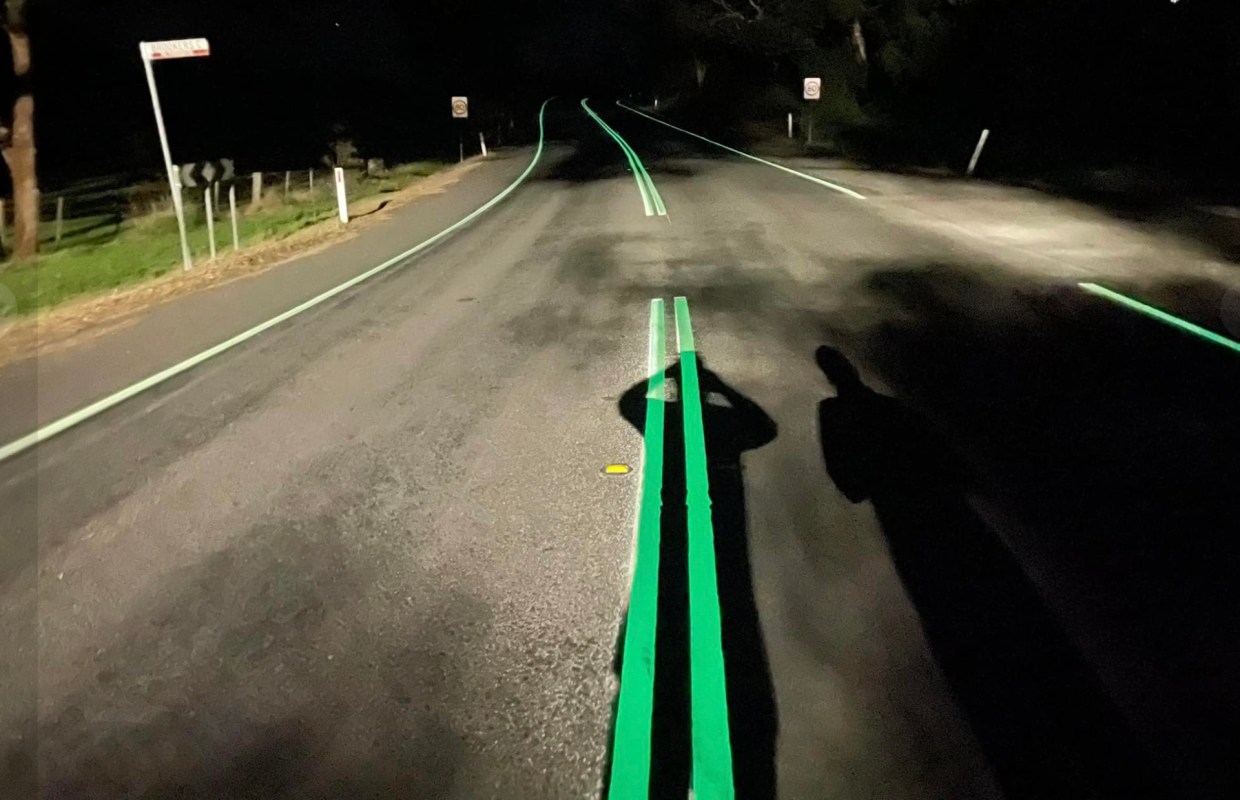It's a simple idea that's been branded as "genius" — glow-in-the-dark line markings that have debuted on roads in Australia.
Night driving presents a number of risks, including problems with depth perception and color recognition, along with the sometimes blinding glare of headlights from oncoming vehicles.
The neon-green line markings, which first hit one Victoria road for a test run in May 2023, set out to solve another nighttime driving issue — lack of visibility.
Tarmac Linemarking, in collaboration with OmniGrip and Vic Roads and materials supplied by Smarter Lite Group, applies the strips, which utilize the natural science of photoluminescence. During the day, the coating of the lines absorbs and stores light. Then, when night falls, the coating projects the light it has stored, illuminating the road for drivers, reports the platform Unilad.
Tarmac posted about the new lines on Facebook in May 2022, and people were beyond excited.
"Yes, we need this on all roads," one person said. "This would definitely save lives!"
Victoria is investing $4 million to install these lighting treatments at 70 locations, per the Regional Roads Victoria website.
According to the American National Safety Council, even with high-beam headlights on, nighttime visibility is limited to about 500 feet. This means there is less time to react to something on the road, especially when driving at faster speeds.
"This treatment will make it easier for drivers to see the line markings or signage and provide stronger definition coming up to intersections and curves, giving drivers more time to react and preventing them from veering from their lane," Regional Roads Victoria said in a statement. "This will be particularly beneficial for people who are not familiar with driving through the area."
To make things even better, these nifty new line markings utilize passive lighting (no electricity needed), so it is an eco-friendly solution to illuminate the roads. And they won't just keep drivers safe — they can benefit pedestrians and cyclists as well. In fact, Victoria's government is also creating LED-lit walkways near intersections.
Slate detailed back in 2013 that the Netherlands experimented with a similar project, but as one study put it, the idea hit "a standstill because of the short luminous time, poor durability, and high implementation costs." The BBC reported in 2014 that the project was faded out because the paint did not handle moisture well enough, so Tarmac Linemarking and Smarter Lite Group will have to overcome those challenges with this latest experiment.
This is one of a handful of simple but innovative road and sidewalk solutions that are changing our lives for the better.
In Phoenix, which suffered from an unprecedented heat wave during the summer of 2023, the city unveiled "cool pavement." The light-colored roadway coating reflects sunlight and absorbs less heat than dark-colored asphalt and can lower surface temperatures by 10.5-12 degrees Fahrenheit.
Meanwhile, "permeable pavement," a type of porous surface made up of tiny open holes that allow water to soak through, could be part of our answer to flooding issues by reducing surface water and runoff.
Join our free newsletter for weekly updates on the coolest innovations improving our lives and saving our planet.









